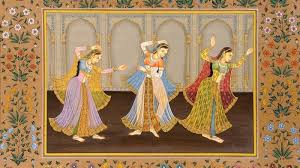History of scaled-down works of art in India
Littler than regular recreation exercises isn’t for powerless willed. Most of the models and miniature painting service for tabletop war games and table game don’t come painted. When in doubt in a unit, the little scope pieces are when you need to accumulate before you paint. These might fuse model trains and other collectable scale relaxation exercises, e.g., vehicles, planes, military vehicles. From this, we can know that painting always depicts the way we live and also nature. Sometimes it may reflect the lifestyle of certain culture people.
A pursued scaled painter is a free skilled worker who works in painting miniatures. Also, similarly as with any master help industry, there is a broad scope of strategies. Some designated painters work alone, painting models for clients as a recreation movement and a little side cash, or an element of a more significant association. In either case, the standard is comparable. A trade is made between an approved little painter (and studio) and the client who needs one or various models painted to a particular standard or quality. Clearly, with any assistance, you may either pay for a deliverable that satisfies your wants or truly perplex you.
History of smaller than average artistic creation in India:
A distance away, they are beautiful. On closer evaluation, they are glorious, loosening up stories got with little, extraordinary nuances. The universe of Miniature Paintings is a kaleidoscope of history, consecrated writings, and people’s lives through the ages.

While it was Buddhism in the east, it was Jainism that energized the littler than average innovative advancement of the Western Indian style of downsized fine art. This structure won in Rajasthan, Gujarat, and Malwa, from the twelfth sixteenth century A.D.
Little show-stoppers started in India around 750 A.D. when the Palas controlled over the eastern bit of India. Since exacting exercises of the Buddha, joined by his photos, were made on palm leaves, these canvases got acclaimed. As these aesthetic manifestations were done on palm leaves, they should be littler than anticipated in nature because of room impediment. Around 960 A.D., practically identical canvases were introduced in India’s western bits by the pioneers of the Chalukya Dynasty. During this period, little scope works of art routinely portrayed tough subjects. With the climb of the Mughal Empire, little scope masterpieces started creating on a level dark beforehand. Akbar’s worship for craftsmanship, Indian littler than anticipated canvases joined segments of the Persian style of painting, to offer rising to the Mughal style of painting. These little scope arrangements further progressed with the effect of masterful European manifestations in the Mughal court. Extensively after the rot of the Mughal Empire, littler than typical masterpieces and experts were stigmatized by Rajasthan’s Rajput chiefs. Albeit influenced by the Mughal style of painting, Rajasthan’s downsized syntheses had their specific features and naturally outlined the magnificent lifestyle and incredible records of Lord Krishna and Radha. Most of these downsized imaginative manifestations depicted rulers and sovereigns’ lifestyle and described their accounts of boldness. Moreover, many of these aesthetic manifestations were made to display various rulers’ responsibility towards their different subjects and domains.

